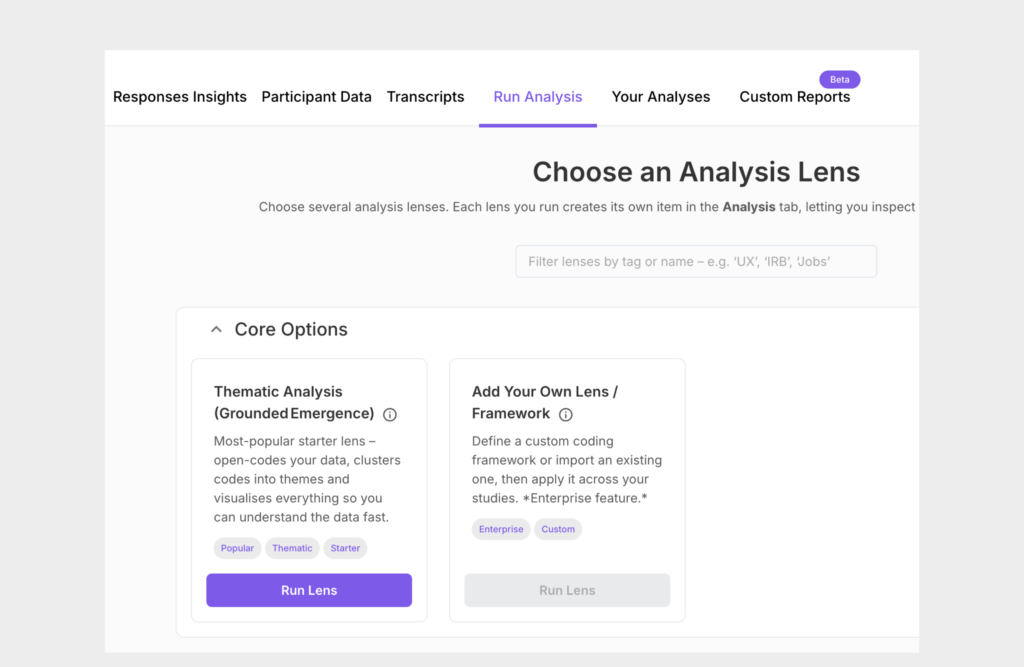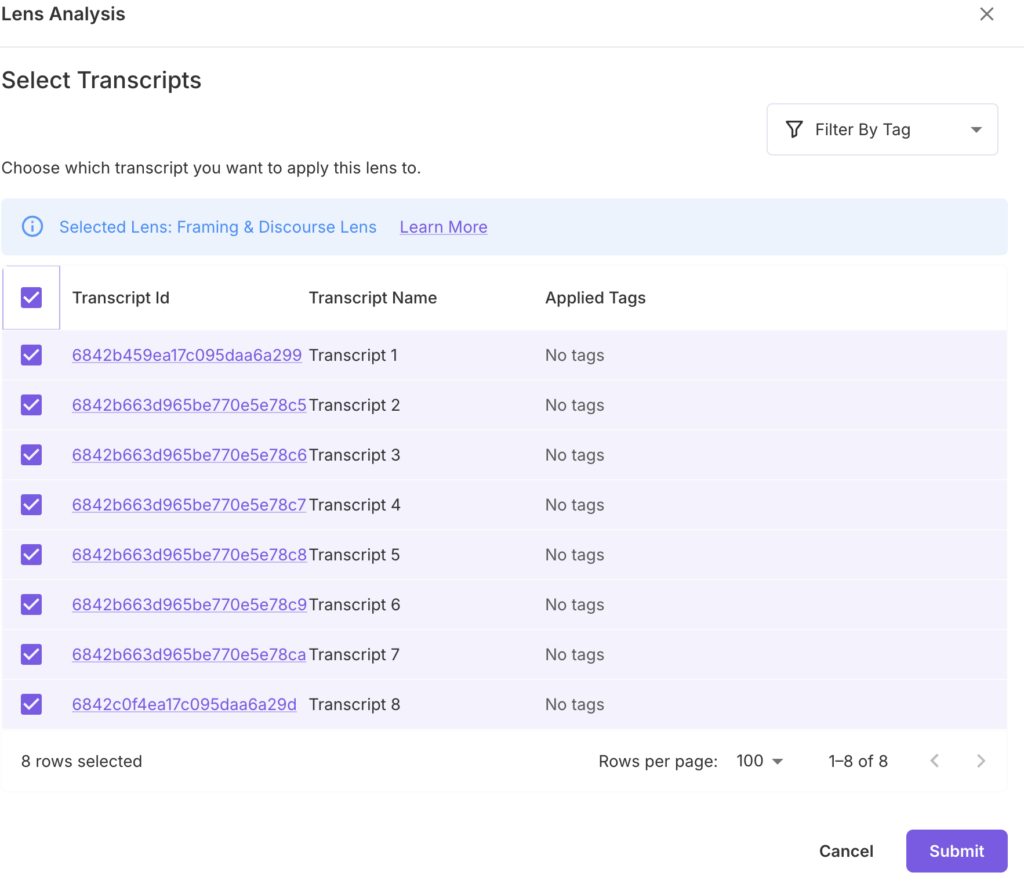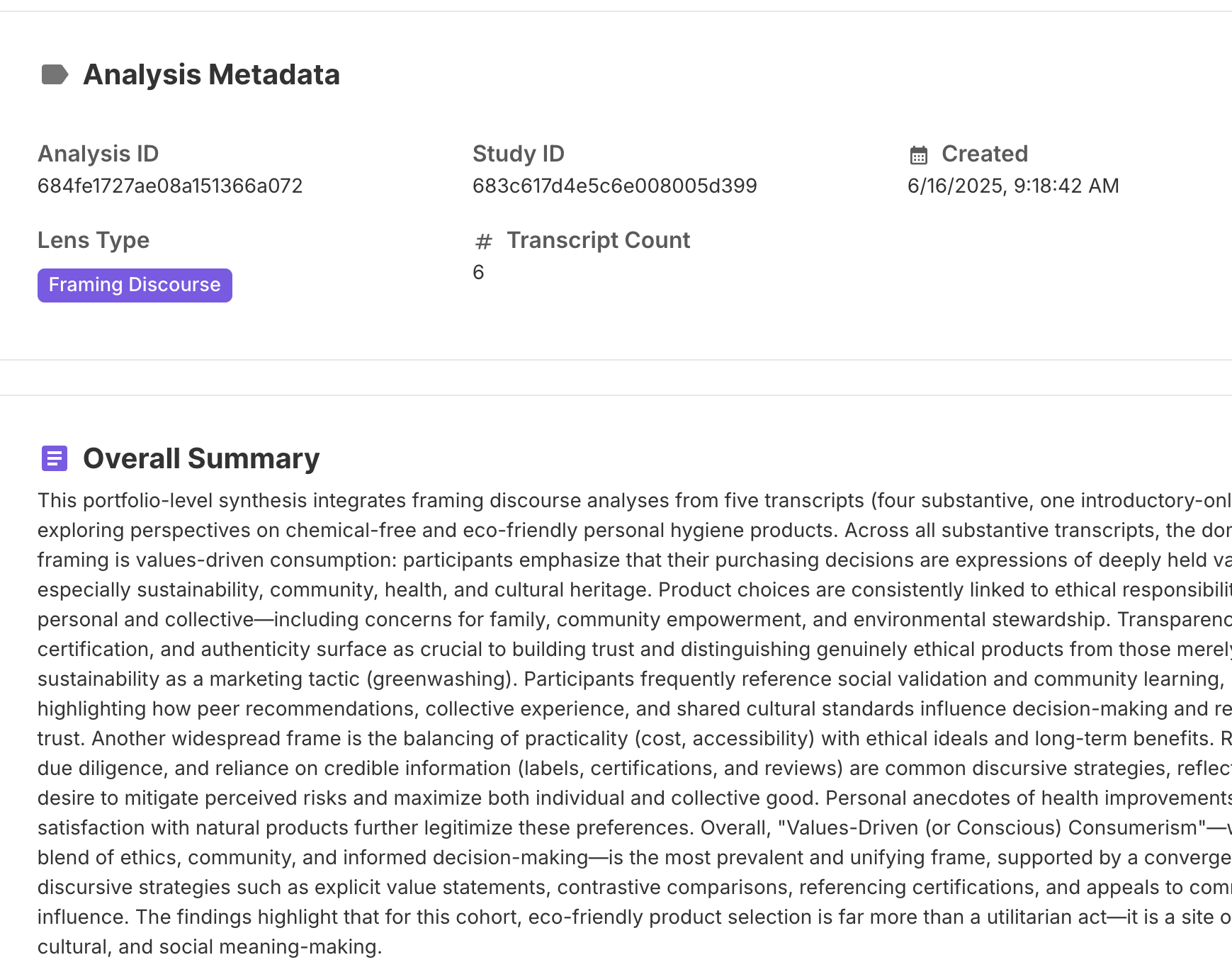This guide provides a walkthrough on how to do the Framing and Discourse Lens
analysis with Qualz.ai. Ideal for researchers examining how language shapes perception, power, and meaning, revealing the rhetorical strategies, cultural narratives, and framing devices that influence how users interpret products, values, and decisions.
Step 1: Prepare Your Interview Transcripts
To get started with Framing and Discord lens analysis, you’ll need transcripts of interviews uploaded into your Qualz.ai workspace. You can do this in two ways:
- Use AI-Moderated Interviews: If you have conducted interviews using Qualz.ai’s AI-Moderated Interview feature, transcripts are automatically generated, saving you significant time and effort. Ensure these sessions are marked as complete.
- Upload Existing Transcripts: For interviews conducted manually or transcribed elsewhere, you can easily upload your transcript files. Qualz.ai supports various common formats, including DOCX, PDF, and TXT. Navigate to the appropriate section in the platform to upload and process these files.
Step 2: Navigate to the “Run Analysis” Section
With your transcripts prepared, you can initiate the analysis process
- Click on the “Run Analysis” tab in the top menu.
- The “Run Analysis” area gives you the option to choose the type of lens to run the analysis.

Step 3: Select a Lens and Your Interview Transcript
You can choose from multiple lens types, such as

Here, we have selected the Framing and Discourse Lens.
- Click on Run Lens to get started
- Check the box next to each transcript you wish to analyze.
- Click the Submit button to run the analysis.

Step 4: View the Results in “Your Analyses”
Go to the “Your Analyses” tab to view your completed analysis.
With Qualz.ai’s Framing & Discourse Lens, you can move from unstructured interviews to rich interpretive insight into how language, framing, and narratives shape meaning, power, and perspective, all in minutes.

Quantifies and ranks how frequently each framing appears across participants, helping you pinpoint which worldviews dominate the discourse and which remain peripheral but potent.

Discursive Strategy Mapping: Surface language tactics such as explicit value statements, peer references, research citations, and anecdotal storytelling, giving you access to the underlying rhetorical playbook participants use to build legitimacy, express uncertainty, or promote trust.

Make sense of complex interviews through framing, discourse, and values-based reasoning.
Try the Framing & Discourse Lens at Qualz.ai. Schedule a demo now!



